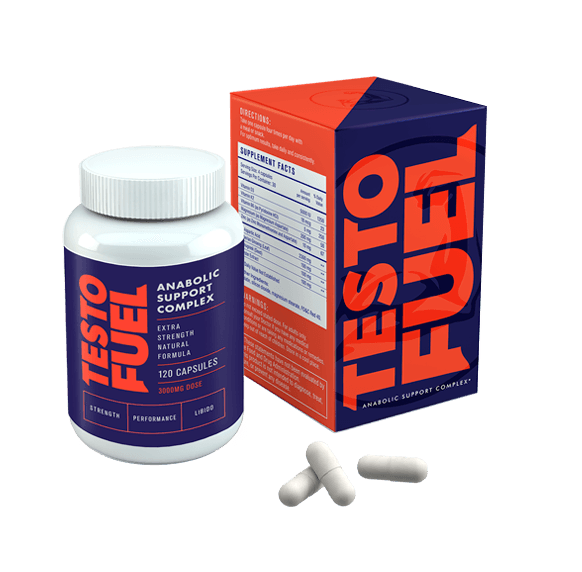Testosterone Replacement Therapy (TRT): Science, Myths & Facts
Testosterone Replacement Therapy (TRT)
Are you or someone you know thinking about trying TRT? For some men, Testosterone Replacement Therapy can seem like an elixir of life, an opportunity to regain their health and vigor.
After all, testosterone is a potent androgen hormone responsible for so many masculine traits and health markers.
Why wouldn’t all men want to drink from TRT’s potential fountain of youth? But, before you decide to undergo treatment, it’s important to understand the risk and reward involved.
Why is testosterone important?
Testosterone (T) is a powerful primary sex hormone and an anabolic steroid.
Men produce it the most and women creating it too, but in much smaller amounts. Hence why males show considerably stronger masculine traits like increased muscle mass, bone growth, and voice deepening than females.
Men primarily create T inside their testes, with some also produced in the pituitary gland. Women, on the other hand, produce it in their ovaries and adrenal glands.
The roles of testosterone span way beyond the cartoonish caveman stereotypes we all know.
It’s arguably the most important hormone in the entire male body – not just an afterthought allowing you to grow a thicker beard. There’s more to T than sex drive and competitiveness too.
Testosterone also has a handful of integral functions in female health. But the true effects are a lot lesser known, due to there being a limited number of high-quality studies.
This is one of the reasons this article will gravitate toward exploring the roles of TRT among men.
In males, the functions of testosterone include[1]:
- Development of male reproductive organs
- Growth of reproductive organs during puberty
- Facial, body, and pubic hair growth
- Sex drive/libido
- Sexual function
- Development of muscle mass
- Muscle strength
- Bone density
- Fat distribution
- Energy – mood & red blood cell production
- Mood
- Assertiveness
In females, the functions of testosterone include:
- Growth of reproductive tissue
- Bone mass
- Fertility
- Energy – red blood cell production
It’s clear to see how testosterone could impact almost every aspect of your life. Unbeknown to a lot of us, the potent hormone may be influencing the way we feel internally, or even our energy levels at work and in the gym.
Libido is the usual layman method for tracing how well your T is performing; yet strength, muscle mass, bone density and mood can all be other indicators.
The only way you’ll truly know how your testosterone levels measure up is with a blood test. Book an appointment with a doctor if you want to find out yours.
Low testosterone symptoms
Normal testosterone levels for males vary between 300-1000 ng.dL.
At first glance, such a vast range of 700 ng.dL hardly seems normal. But the broadness accommodates the huge variation between the age and genealogy of all men.
Male testosterone takes a sharp increase during puberty – triggering changes associated with masculine maturity in the process – before hitting a peak around age 19.
T then levels out into a man’s 20s before turning toward a natural decline around age 30. It’s estimated that levels drop by around 1% each year.
Women, on the other hand, usually possess between 15-70 ng.dL of T. We really weren’t exaggerating the difference earlier and women can experience low testosterone too.
Low testosterone in men – aka hypogonadism – is diagnosed when levels drop below the 300 ng.dL baseline.
The symptoms can range from mild muscle loss to having a substantial negative impact on health and wellbeing.
There are no benefits of suffering from testosterone deficiency and it can be dangerous. Spotting the symptoms early could help you combat issues sooner.
Symptoms of low testosterone include[2]:
- Muscle loss
- Frailty
- Reduced bone mass
- Tiredness
- Low libido
- Erectile dysfunction
- Infertility
- Irritability
- Anxiety and/or depression
- Brain fog
- Fat gain and obesity
- Poor sleep
- Increased risk of heart disease and diabetes
What is testosterone replacement therapy (TRT)?
Low testosterone can be extremely destructive for men.
A loss of physical prowess can cause a knock-on effect for their confidence, while decreased sex drive and performance may leave a lasting impression on their mental health.
Frailty and weakness also expose you to a greater risk of injury and obesity can cause a negative feedback loop, fueling androgen deficiencies even further.
It may come as no surprise that hypogonadism is also considered a contributor to all-cause mortality – it can literally kill men early.
So, for some men, testosterone replacement therapy can appear like a chance to regain their virility and confidence.
By replacing their natural testosterone with a synthetic version, they have just what they need to reawaken their androgen receptors and restart processes they lost during hypogonadism.
It’s important to remember that testosterone therapy isn’t natural human-produced testosterone – TRT is created in a lab.
The clue is in the name, as it replaced testosterone, not restarts production or supports it. We’ll look at the possible side effects of replacing your natural testosterone in a short while.
Now, feeling a few symptoms of low testosterone won’t automatically qualify you for therapy. There are a whole host of risks and rewards to consider before taking synthetic T.
Your doctor will first look to see if your symptoms match up with unequivocally low hormone levels.
They’ll also inspect your medical history to look for increased risk of certain cancers, heart disease, and strokes.
Forms of testosterone replacement therapy
You’ve probably already heard about testosterone injections – especially since the way TRT is portrayed in the news.
But today, you can choose to take testosterone without ever having to see or feel a needle. Gels, patches, and implants are all available at your doctor’s discretion.
Forms of TRT include:
- Gels – Testosterone is absorbed through the skin after the gel is applied. Some pharmaceutical manufacturers supply the gel in a pump that dispenses the specific amount of T prescribed by your doctor.
- Skin patch – Testosterone is applied through the skin after a patch is applies. You usually only have to apply one patch per day.
- Mouth patch – Mouth patches release a constant stream of testosterone, which is absorbed into the blood via oral tissues.
- Implants – Testosterone is released via a pellet implanted under soft tissues. You will not need to replace an implant nearly as frequently as patches.
- Injections – Testosterone is injected directly into the blood stream via a needle pushed into muscle tissue.
Your doctor will be able to advise the optimal form of TRT for your circumstances. However, your choices may also be influenced by what your medical plan will cover.
Benefits & risks of TRT
By topping up your testosterone, TRT can help reverse the symptoms associated with hypogonadism.
The synthetic hormone binds to previously untouched androgen receptors and stimulates them into driving various functions.
Men who begin testosterone treatment report feeling energized as red blood cell production increases.
They may also have stronger erections as androgen receptors inside the penis encourage the trapping of blood and sense their sex drive returning.
While some benefits may take only a short while to achieve, others take naturally longer.
But, taking testosterone replacement therapy isn’t without its risks. The long-term health effects aren’t known either, with some medical professionals concerned about the lasting impact of TRT use.
It is important that every person who undergoes therapy understands this – there is no evidence showing how your health might be impacted many years from now.
Here is a breakdown of some possible risks and rewards of TRT.
Increased muscle mass
Promoting muscle protein synthesis (MPS) is one of testosterone’s primal functions, which it influences by attaching to androgen receptors inside muscle tissue.
TRT can reignite the muscle building process, allowing previously hypogonadic suffering men to increase mass easier[3][4].
You’ll probably still need to apply a resistance training regime to pack on a substantial amount. While testosterone might drive MPS, it won’t do the hard work for you.
Building muscle always requires a stimulus to force adaptations and growth – something an injection or tablet can’t provide.
Interestingly, exercise also appears to amplify the effects of TRT[5].
Fat loss
TRT may also contribute toward helping post-deficient men lose body fat[6].
Firstly, increasing your muscle mass simultaneously boosts your metabolic rate, as muscle possesses a higher daily energy demand, which may result in fewer calories being stored as body fat.
Additionally, TRT could increase energy levels and mood, making exercise and healthy eating more appealing.
Given that fat loss relies solely on achieving a calorific deficit[7], consistent exercise and making the right food choices should increase the chance of success.
Energy and better wellbeing
Men who use TRT report feeling a resurgence of energy in their lives[8]. Scientists aren’t exactly sure why, because their evidence is inconclusive.
TRT therapy given to hypogonadal men also appears to combat some cases of low-mood, depression and anxiety[9].
Research suggests hormone therapy may also improve other quality of life measurements such as fatigue and general well-being[10][11][12].
Sexual desire and function
Experts say that corresponding low levels of testosterone are typically associated with low sexual activity.
Serum-free testosterone is also significantly correlated with erectile and orgasmic function, with older men requiring higher levels of circulating T to drive their libido and erections[13][14][15][16].
Put plainly – low testosterone can have a severe impact on sex drive, maintaining an erection and having satisfying sex.
As a result, men who topped up their testosterone levels with TRT often self-report a reinvigorated libido with possible treatment of erectile dysfunction[17][18].
Studies show that frequency of sexual act and sleep-related erections can increase too[19][20].
One thing to remember about these studies is that they’re carried out to inspect the effect of TRT on men suffering from hypogonadism.
If issues like low libido and erectile dysfunction are still present without hypogonadism, further screenings should be carried out to find other possible causes.
Increasing testosterone in men with otherwise healthy levels is unlikely to yield the same results.
Bone density
Osteopenia, osteoporosis, and fracture prevalence are all bone issues that appear more in hypogonadal men[21].
However, with a high enough dose, hypogonadal men may be able to improve their bone density and health[22].
Testicular atrophy
Noticing your testicles reducing in size is one of the more common side effects of TRT. Although it may seem strange, the science is relatively simple.
The pituitary gland inside your brain detects when there needs to be an increase in testosterone production.
It then sends two homones to your testes with the instruction to create more testosterone and sperm. This is how damage to the pituitary gland can cause hypogonadism without injury to the testes.
Now, because TRT has supplied you with ample testosterone, the pituitary picks up on this.
It has no need to send hormones to trigger T production inside the testes, which can ultimately send them dormant and produce little to no sperm.
Because the parts dedicated to sperm production make up most of the testicle size, it shrinks as a result.
You might not be able to reverse reduced sperm reduction
Unfortunately, experts say that prolonged TRT usage and increased age may decrease the chances of achieving normal sperm production afterward[23].
This can cause complications and distress if you ever want to start a family in the future.
You must carefully consider the extended use of therapy if you still want to stay fertile. A doctor should explain the risks involved and how lengths of treatment may affect you in the future.
Increased risk of heart attack and stroke
Aging men who use TRT may have an increased risk of experiencing heart attacks and strokes.
According to one huge study on over 15,000 men, TRT users had a 21% higher risk of cardiac events compared to non-users[24].
Your doctor should go through the increased heart attack and stroke risks before you decide to start taking TRT.
Their choice on whether they prescribe therapy to you may be based on your own history with these complications.
Gynecomastia
The development of larger breasts in men is a possible benign complication of TRT. Experts suggest that this may be easily resolved by adjusting dosage[25].
Exasperation of sleep apnea
There are many studies pointing TRT use toward the exasperation of sleep apnea[26][27].
Should I do it?
Deciding to undergo testosterone replacement therapy should not be a rushed decision.
You must have a discussion with your doctor about the potential pros and cons of TRT, then choose the route you feel is right.
Take time to consider the impact hypogonadism is having on your health. Do you feel the risks associated with TRT is worth the reward?
Are you completely sure of the intricacies involved? It’s imperative that you’re well-informed about what you’re going to put into your body.
For some men, TRT can give them a new lease of life. For others, it isn’t worth the potential side-effects. Only you can decide if you should do it – nobody else.
The bottom line
Testosterone replacement therapy is a growing trend among men trying to solve the riddle of hypogonadism.
It can reinvigorate your libido, boost energy, improve mood, and reclaim your ability to build muscle mass. For some, starting TRT feels like taking out a new lease on life.
But testosterone therapy isn’t risk free. Possible side-effects range from benign through to life threating, so the decision to take TRT shouldn’t be treated lightly.
Make sure you are absolutely clear about what TRT is and the impact it can have on your body. Your doctor should be able to support you during the decision-making process.
Bottom line – Testosterone replacement therapy shows promise for treating hypogonadism. However, it isn’t without risk and the long-term impact of TRT on health is unknown.



